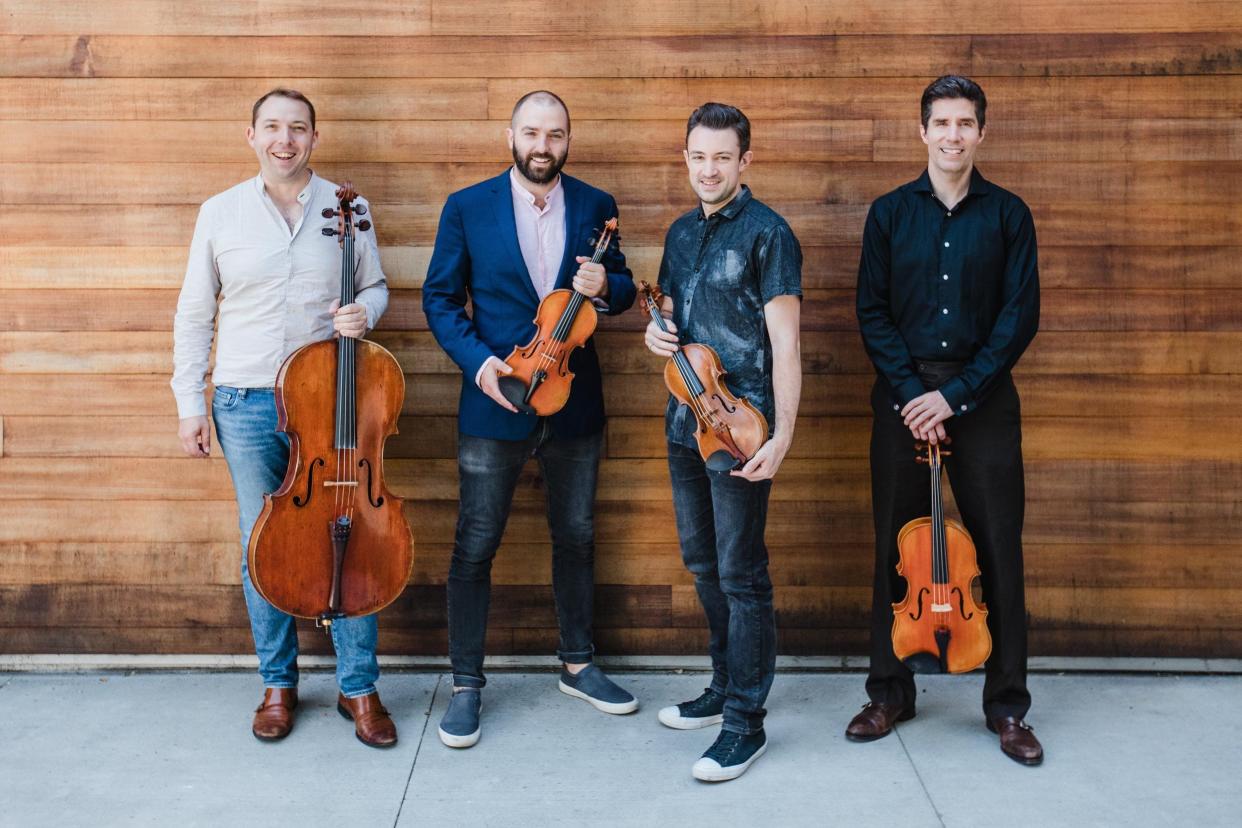Review: With slight pivot, Escher Quartet delivers strong string concert at Four Arts

- Oops!Something went wrong.Please try again later.
- Oops!Something went wrong.Please try again later.
- Oops!Something went wrong.Please try again later.
A quick change in programming with a substitute violist and new repertoire saved the day on Sunday at The Society of the Four Arts.
The Escher String Quartet has performed worldwide and is known for its complete audio recordings of the Felix Mendelssohn and Alexander von Zemlinsky string quartets. The ensemble had initially scheduled the performance with a soprano vocalist. After she and the group’s resident violist, Pierre LaPointe fell ill, the ensemble changed the program to include Franz Joseph Haydn’s “‘Sunrise’ Quartet in B-flat, Op. 76, No. 4,” Bela Bartok’s ''Quartet No. 3, Sz. 85,” Samuel Barber’s famous “Adagio for Strings,” and Antonin Dvorak’s “Quartet in F Major, Op. 96 ‘American.’”
The ensemble started the Haydn “Sunrise” quartet with elegant articulation. The adept musicians never strayed from their superior technical abilities. The focus at the entrance of the piece was on the first violin, which exhibited a somewhat reedy sound at first before warming the tone later in the adagio movement. Similarly, the cello and viola were always crystal clear but neglected to provide the homogenous depth one might expect from the late 18th-century work.
The quartet, named after artist M.C. Escher, lends itself well to combining individual musical textures to create uniformity. However, the individual instruments were perhaps a little too independent from each other at times in this piece.
Although Op. 76 represents the height of Haydn’s string quartet writing, which had matured significantly from his early compositions, this work is still deeply rooted in the First Viennese School tradition. While Haydn was a master composer who often adhered to strict musical form, which may seem mathematic in structure, he rarely strayed from producing enjoyable musical phrasing and singable melodies. The ensemble highlighted Haydn’s intentions in the “Finale: Allegro, ma non troppo,” where the technical prowess of the quartet shined brightest.
One of the two newly programmed pieces for the afternoon, Bartok’s “Quartet No. 3,” was introduced briefly by cellist Brook Speltz and violist Luke Fleming, who was filling in for LaPointe. Speltz informed the audience that Fleming was given a three-day notice to prepare for this concert. The extended techniques and rhythmic difficulties of Bartok’s third quartet alone make this an astonishing feat. The textures of each instrument were perfectly balanced. The folk influences were emphasized appropriately, and one could even begin to hear Bartok’s supposed fascination with the Fibonacci sequence rooted within the work.
The most well-known work presented in the concert was played shortly after intermission. The quartet’s presentation of Barber’s “Adagio for Strings” (originally the “Molto adagio” movement from Op. 11) seemed a little unsettled. It was the second work substituted in the concert, and it seemed to get off to a rocky start. While the musicians maintained their focus overall, the original “molto adagio” was played in an accurate “andante” tempo.
The afternoon performance ended with a charming version of Dvorak’s “Quartet in F Major.” Dvorak wrote his second American composition in the summer of 1893, shortly after his renowned ninth symphony “From the New World.” The ensemble was poised and presented the work beautifully, emphasizing the major American themes while reducing the more evident Bohemian influences.
This article originally appeared on Palm Beach Daily News: Quartet tweaks program successfully at Four Arts

